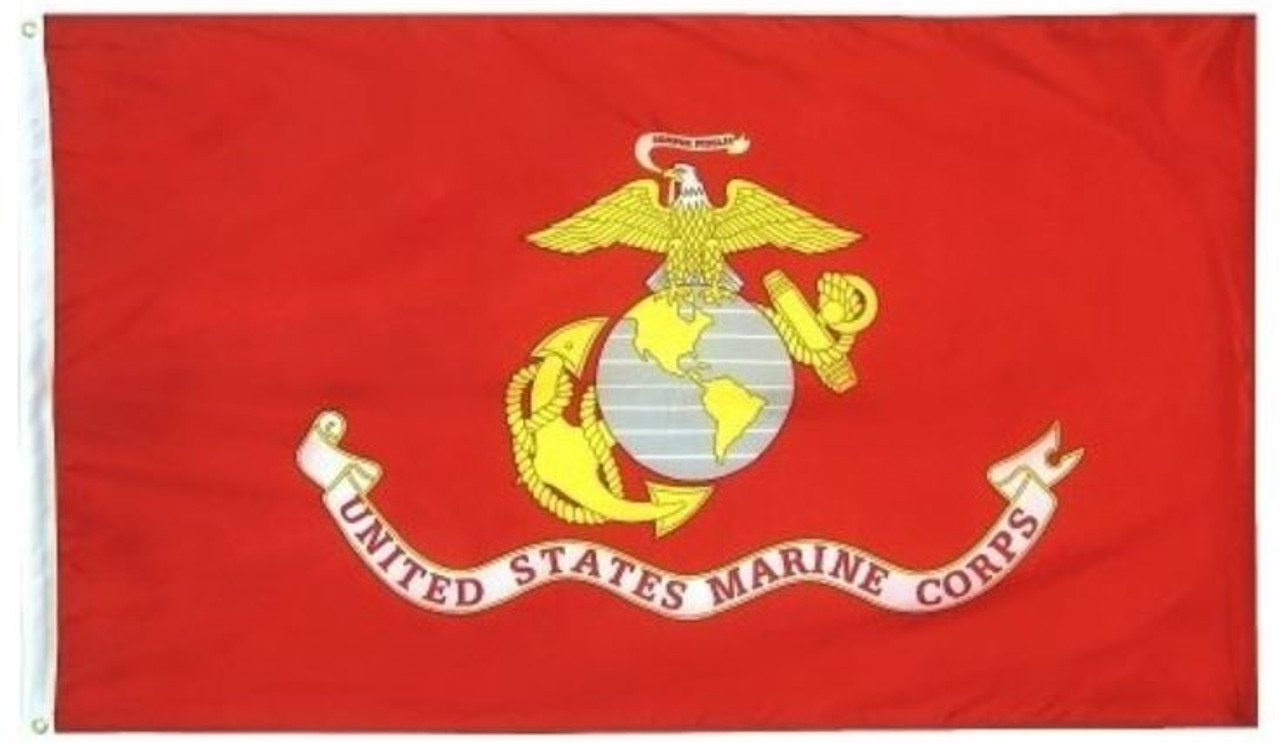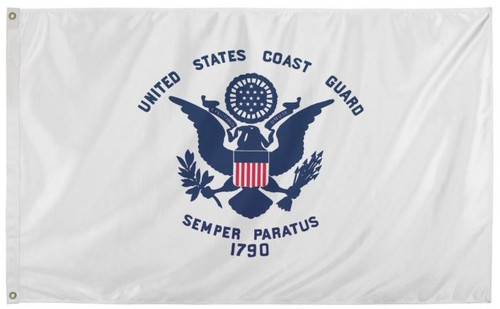Product Description
Our Economy flags are printed on a polyester/cotton blend; they have the same feel of a cotton flag but with the advantages of a polyester flag. A single hem on the top and bottom with a double hem on the fly end, sewn to a canvas header with brass grommets. All economy flags are made in America.
All Economy Flags Feature:
- Printed poly-cotton blend fabric.
- Traditional feel of cotton flag with advantages of polyester flag.
- Modern dyeing techniques.
- High Resistance to UV Fading.
- Bright colors that are fast to sun and rain.
- Ideal for both residential or commercial applications.
- Standard canvas header with brass grommets.
- Double Stitched fly end.
- 100% Made in U.S.A!
The United States Marine Corps, Semper Fi, is a branch of the United States Armed Forces responsible for conducting expeditionary and amphibious operations with the United States Navy as well as the Army and Air Force. The Marine Corp began when two battalions of Continental Marines were formed on November 10th, 1775. They were a service branch of infantry troops that could fight both on land and at sea. The Marine Corp took the lead in the Pacific theater of World War II launching a massive campaign of amphibious warfare, advancing from island to island. The Battle of Iwo Jima is one of the most famous Marine engagement of the war. It began on February 19th, 1945, The Imperial Japanese Army had fortified all foreseeable positions against the Americans, building a network of bunkers, hidden artillery positions, and 11 miles of tunnels.
During the Marine’s amphibious assault on Iwo Jima, the Navy was supposed to provide bombardment cover for the Marines, but due to the weather and the Japanese artillery they weren’t able to provide much cover as the Marine’s landed on shore. True to form, the Marine’s landed on the beaches one minute ahead of schedule landing on the southeastern beach of Iwo Jima. Landing with the 5th Marine Division signal officer, Major Howard Connor, were 6 Navajo code talkers. Between these six code talkers they worked tirelessly around the clock for the first 2 days of battle, sending and receiving 800 messages between each other. The battle to push inland was fierce, Leckie’s description in The Battle for Iwo Jima sounds almost nightmarish. By 11:30, the Marines arrived at their first objective, Airfield No. 1, they were met with a fanatical 100-man charge. The Marines were able to keep their toehold on Airfield No. 1 as night fell. Thankfully the American forces learned from previous Japanese night attacks; either the banzai charge or they would sneak in and silently attack, listen to Dan Carlin’s Hardcore History for more on this.
With all the cover that the Japanese had created the Marines learned quickly that firearms weren’t very effective. They resorted to grenades and flamethrowers as a solution to this problem. One of the technological innovations that helped the Marines move forward were the Sherman M4A3R3, 8 of these medium tanks were equipped with flamethrowers (affectionally name “Ronson” or “Zippo” tanks.) Finally, on February 23rd, 1945, six Marines from E Company, 2nd Battalion, 28th Marines, raised the American flag over Mount Suribachi signifying its capture. The “first flag raising” photograph that was taken was captured by Marine photographer Louis R. Lowery, the pictures were later released in late 1947. When James Forrestal, Secretary of the Navy, landed on the beach he decided that he wanted that flag as a souvenir. A larger flag was sent up to 2nd Battalion, 28th Marines and a second flag raising took place. This is where Joseph Rosenthal took his exceptionally famous photograph, Raising the Flag on Iwo Jima.








